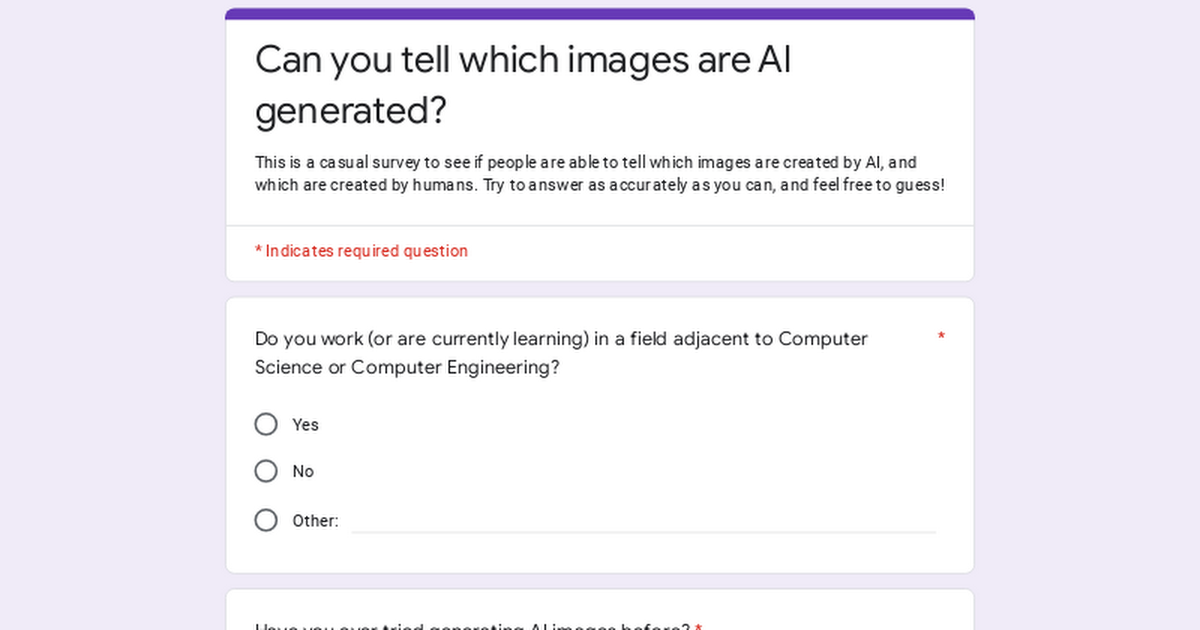- cross-posted to:
- [email protected]
- cross-posted to:
- [email protected]
cross-posted from: https://programming.dev/post/3974080
Hey everyone. I made a casual survey to see if people can tell the difference between human-made and AI generated art. Any responses would be appreciated, I’m curious to see how accurately people can tell the difference (especially those familiar with AI image generation)



Personally, I have no issue with models made from stuff obtained with explicit consent. Otherwise you’re just exploiting labor without consent.
(Also if you’re just making random images for yourself, w/e)
((Also also, text models are a separate debate and imo much worse considering they’re literally misinformation generators))
Note: if anybody wants to reply with “actually AI models learn like people so it’s fine”, please don’t. No they don’t. Bugger off. https://arxiv.org/pdf/2212.03860.pdf here have a source.
This paper is just about stock photos or video game art with enough dupes or variations that they didn’t get cut from the training set. The repeated images were included frequently enough to overfit. Which is something we already knew. That doesn’t really go to proving if diffusion models learn like humans or not. Not that I think they do.
Sure, it’s not proof, but it gives a good starting point. Non-overfitted images would still have this effect (to a lesser extent), and this would never happen to a human. And it’s not like the prompts were the image labels, the model just decided to use the stock image as a template (obvious in the case with the painting).
This is a bold claim to make with no evidence. When every trained image accounts for less than one byte of data in the model. Even the tiniest images file contain many thousands of bytes. One byte isn’t even enough to store a single character of text, most Latin-based alphabets and some symbols, use two bytes.
There are plenty of artists that get stuck with same-face. Like Sam Yang for instance. Then there are the others who can’t draw disabled people or people of color. If it isn’t a beautiful white female character, they can’t do it. It can take a lot of additional training for people to break out of their rut, some don’t.
I’m not going to tell you that latent diffusion models learn like humans, but they are still learning. https://arxiv.org/pdf/2306.05720.pdf Have a source.
I recommend reading this article by Kit Walsh, a senior staff attorney at the EFF if you haven’t already. The EFF is a digital rights group who most recently won a historic case: border guards in the US now need a warrant to search your phone.
This guy also does a pretty good job of explaining how latent diffusion models work, You should give this a watch too.